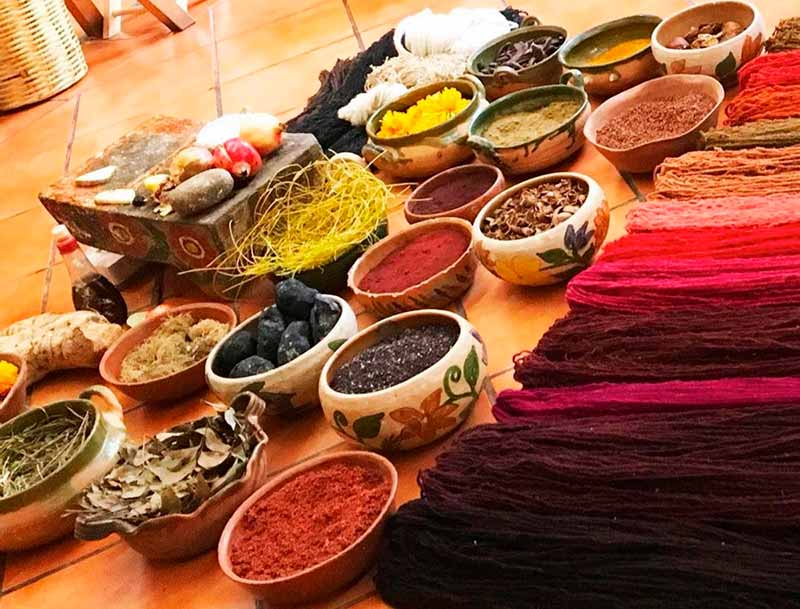
Wind, allergies, sunshine in some places, snow in others, we all know what that means; it’s officially Spring in New Mexico! It’s the season symbolizing growth, renewal and rebirth. Looking around at the natural beauty of New Mexico we see color springing into vibrancy around us once again. At Las Golondrinas no one loves color more than our talented weavers! They turn plants, minerals, and even insects into natural dyes that transform the wool from our Churro sheep into radiant works of art.
Traditionally, New Mexican weavers have harvested wild growing plants to make dye. One that has always been in high demand for vibrant yellows and golds is “Cota.” This hearty plant is resilient with little water and thrives in the New Mexico wild. Our weavers let spun wool (yarn) sit in a mordant (a substance that binds dye to fiber) of water, alum, and cream of tartar, then soak the yarn in a dye bath made of cota petals. Variations in this process result in an array of golden hues. Cota has been integral to New Mexican life for generations, even used to make a tasty, medicinal tea. (*Please note, this is NOT medical advice. Always consult your health care provider before using home remedies (remedios).)

New Mexicans in the past, however, didn’t have access to modern healthcare, and so, relied on herbal healers, honorably called Curanderos by their community. This is not a title they would have bestowed upon themselves. To provide the best care they could, curanderos spend years apprenticing and studying, and utilized various types of plants, herbs, and roots to sooth and cure an array of ailments. One of the most important was oshà. It grows in the high sierras and was used in treating colds, lung infections, and sore throats. It was also believed to ward off rattlesnakes and was used by Pueblo and Spanish communities alike to discourage insect infestation along acequia banks (irrigation ditches), which is great because springtime is also when local farmers from rural communities across New Mexico work together to clean the winter debris from their acequias, as they have for generations.

